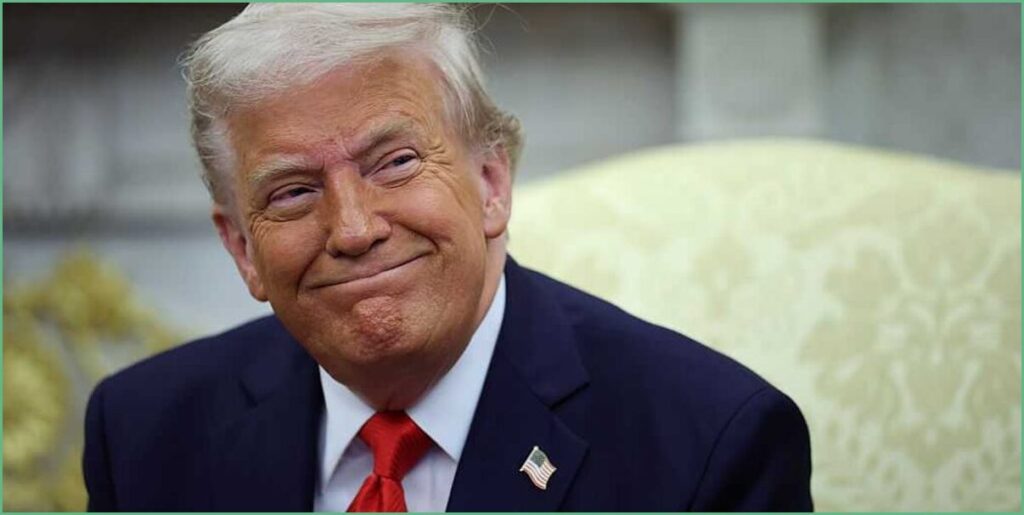The Trump White House went full on with a new tactic this week: memes in the briefing room. What looks like youthful trolling is actually a strategic, blunt message aimed straight at Democrats who refuse to fund the government. It’s disruptive, unapologetic, and unmistakably political theater from a Republican administration that knows how to dominate the narrative.
On the second day of the shutdown, the administration looped short, sharp video clips across briefing room screens to ridicule Democratic priorities. The videos accused Democrats of caring more about health care for illegal immigrants than keeping federal paychecks flowing for hardworking Americans. The tone was sneering on purpose, because that’s how you seize attention in an oversaturated media environment.
The slogans were simple and direct, the kind of messaging conservatives love: “Don’t be dumb. Fund the government.” Those are the blunt sentences that cut through spin and force a political choice into plain English. When your opponent refuses to back common-sense funding, you don’t whisper — you meme.
Before this recent looped set of clips, the president had already been mixing humor and policy on social platforms to keep pressure on House Democrats. One early clip edited House Minority Leader Hakeem Jeffries into a mariachi bit, complete with a sombrero and cartoon mustache, and played it for laughs. The point was raw: make the opposition look unserious and worry about optics rather than policy.
Jeffries publicly condemned that particular clip, calling it “a disgusting video” and warning that accusations of bigotry would not be tolerated. The administration took that reaction and amplified it, leaning into the outrage instead of backing away. It’s classic political jiu-jitsu: turn their anger into more attention for your side.
When the president clipped Jeffries’ response and re-posted it in the same mariachi frame, he added himself as the backing band and kept the crowd laughing. Conservatives see this as effective pressure because it reshapes the debate from wonky budget fights into a battle over who looks reasonable. For voters who want action, not sermons about process, humor that lands can be persuasive.

Photo by Scott Olson/Getty Images
Why the Trolling Strategy Matters
This isn’t just prankster politics; it’s message discipline. Republicans are using short, repeatable visuals to hammer a single claim: Democrats are prioritizing the wrong people during a shutdown. That kind of focused narrative can define the moment and reshape how media frames the crisis.
Vice President JD Vance leaned into the same tone when reporters pressed him about the memes at a recent briefing. He even addressed Jeffries directly in a playful, barbed promise: “I’ll tell Hakeem Jeffries right now — I make this solemn promise to you, that if you help us reopen the government, the sombrero memes will stop,” Vance during the briefing. The line landed precisely because it mixed negotiation with provocation, showing Republicans are serious about reopening the government but also willing to embarrass the other side for political effect.
Vance didn’t stop there. “I think it’s funny. The president’s joking, and we’re having a good time,” he said, and then framed the tactic as compatible with serious bargaining. That’s the Republican argument in plain language: you can negotiate in good faith while also poking a little bit of fun. It’s a two-track approach — keep pressure and keep the base energized.
Critics will call it juvenile and say it lowers the tone of governance. That’s predictable and part of the package when you weaponize humor in politics. The counterargument is straightforward: if Democrats refuse to fund the government, they should expect to be held publicly accountable and mocked for bad choices.
There’s also a practical side to this online theater. Short, repeatable memes are cheap to produce and hard to ignore when looped in a televised press setting. They dominate the attention economy in a way dense policy memos never could. For Republican communicators focused on outcomes, that economy of attention is an asset.
The meme campaign has another effect: it forces Democrats to play defense on optics instead of strategy. Every minute spent denouncing a joke is a minute not spent making a substantive case for their budget priorities. Forcing that trade-off is a core objective of the trolling, and so far it has been working to redirect the conversation.
At the heart of all of this is a simple political bet: voters reward leaders who look like they will fight for their side and win. Using humor to highlight what the administration calls hypocrisy or misplaced priorities is intended to make the case that Republicans are the party of common sense. Whether you love the tactics or not, you can’t deny they’re getting a lot of attention.
In short, the White House meme offensive is direct, deliberate, and strategic. It’s meant to mock opponents, rally supporters, and keep the pressure on while the government remains closed. If you’re running politics like a modern media war, this is the playbook Republicans are using right now to try to win the narrative and, ultimately, the policy fight.
